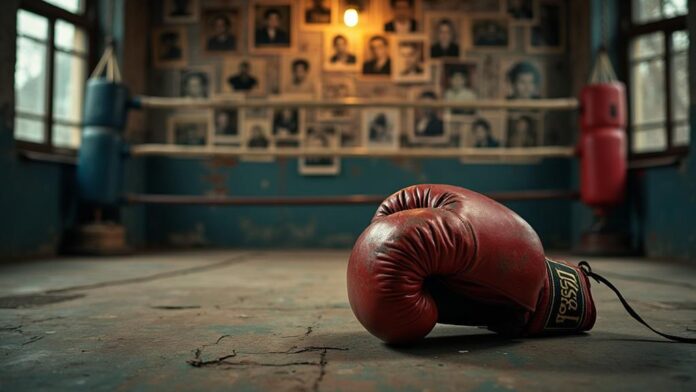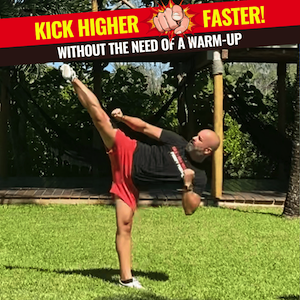As a fighter over 40, you're facing a new opponent: time, which erodes your physical capabilities. You need to set realistic goals that align with your current strengths and limitations. Setting achievable objectives helps maintain motivation, prevents frustration and burnout, and fosters a growth mindset. You'll also need to adapt to natural physical changes, such as declining muscle mass and joint flexibility. By prioritizing rest, recovery, and injury prevention, you can continue training effectively. As you navigate these changes, understanding how to set realistic expectations and measure progress will be key to your ongoing success and growth.
Benefits of Goal Setting
One of the most significant advantages of setting goals is that it enhances your motivation and provides a clear direction for your training. By setting specific, achievable objectives, you'll stay focused on your martial arts journey and make steady progress. Research backs this up, indicating that individuals who set specific goals are 10 times more likely to achieve them compared to those who don't.
Establishing realistic goals helps you maintain mental focus and boosts your sense of accomplishment. When you achieve your milestones, you'll feel a surge in self-esteem, reinforcing your commitment to training.
Regularly reviewing and adjusting your goals allows you to adapt to changes, preventing frustration or burnout. Goal setting also fosters a growth mindset, encouraging you to view challenges as opportunities for learning and improvement rather than obstacles.
Physical Changes After 40
The big 4-0 marks a significant milestone in a fighter's life, and with it comes a host of physical changes that can impact performance in the ring or on the mat.
As you age, you'll likely experience a decline in muscle mass, known as sarcopenia, which can decrease your strength and endurance. To combat this, you'll need to prioritize resistance training and physical activity to maintain your physical fitness.
Your joint flexibility and range of motion will also diminish, making regular stretching and mobility work essential.
Your metabolism will slow down, leading to easier weight gain, so you'll need to be more thoughtful with your nutrition and caloric intake.
Hormonal changes will affect your energy levels, recovery times, and overall physical performance, making recovery strategies vital.
As you age, you'll also need to prioritize rest, recovery, and injury prevention strategies, as your body will take longer to recover from injuries and training sessions.
By understanding these physical changes, you can set realistic goals that take into account your new physical limitations, focusing on maintaining cardiovascular endurance and preventing injuries.
This will help you continue to perform at a high level in your 40s and beyond.
Setting Achievable Objectives
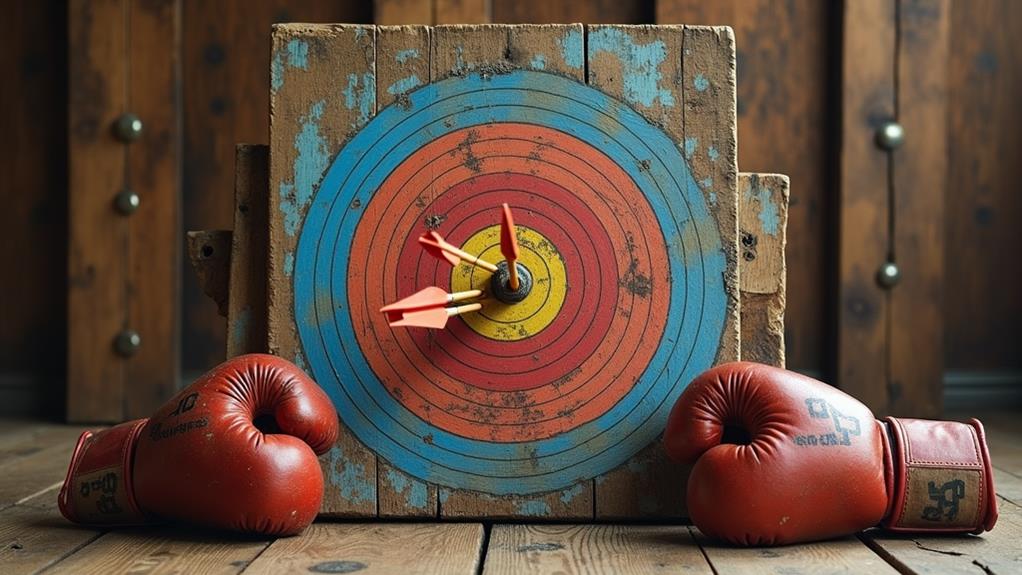
Many fighters over 40 make the mistake of setting unrealistic goals, only to end up frustrated and injured. That's why setting achievable objectives is vital for your continued growth and development in martial arts. You need to guarantee that your goals align with your current physical capabilities, taking into account the impact of age on your recovery and performance.
By setting realistic goals, you'll avoid pushing yourself too hard and reduce the risk of injury.
To set achievable objectives, use the SMART criteria: Specific, Measurable, Attainable, Relevant, and Time-bound. For example, you might aim to master a particular technique within three months.
Break down your long-term goals into shorter-term objectives, like completing a certain number of training sessions per week. Regularly assess your progress and adapt your training plan as needed.
Don't be afraid to seek guidance and feedback from experienced instructors to help you set realistic objectives. By doing so, you'll promote a supportive environment for growth and development, which is essential for both your fitness goals and mental health.
Importance of Realistic Expectations
Facing the challenges of martial arts training over 40 requires you to acknowledge the importance of realistic expectations.
As you age, your body undergoes natural physiological changes that affect your fitness level. You lose muscle mass and need more time to recover between training sessions.
Setting unattainable goals can lead to disappointment, decreased motivation, and a higher risk of injuries.
Injury Prevention Strategies

As you push your body to its limits in martial arts training over 40, injury prevention becomes an essential aspect of your regimen. To maintain your performance and prevent setbacks, you need to implement effective injury prevention strategies.
| Injury Prevention Strategies | Description | Benefits |
|---|---|---|
| Warm-Up and Cool-Down | Thorough warm-up before training and cool-down afterward | Reduces risk of injuries, aids recovery |
| Gradual Progression | Gradual increase in training intensity and duration | Avoids overuse injuries, allows body adaptation |
| Listen to Your Body | Pay attention to pain or discomfort during training | Prevents minor issues from becoming severe injuries |
| Proper Technique | Mastering proper techniques and form | Reduces risk of injuries, enhances performance |
| Cross-Training | Incorporating activities like swimming or yoga | Improves overall fitness, flexibility, and performance |
Adapting to Aging Bodies
The aging process brings about inevitable changes that affect your body's physical capabilities, making it essential to adapt your training approach. As you age, you'll likely experience a decline in muscle mass and strength, which impacts your fitness goals.
To accommodate these changes, focus on setting realistic goals that prioritize technique and skill improvement over intensity or volume of training. You'll also need to incorporate low-impact training and mobility exercises to maintain flexibility and balance, reducing the risk of injuries.
Your aging body requires longer recovery times, so adjust your training schedule to include sufficient rest and recovery periods. This will help you avoid burnout and injury, ensuring you can maintain a consistent training regimen.
Hormonal changes, such as decreased testosterone levels, can also affect your physical performance. By acknowledging these physical changes and adapting your training approach, you'll be better equipped to achieve your fitness goals.
Mental toughness and resilience will also play a significant role in your success, as you'll need to stay motivated and focused on your goals despite the physical challenges you'll face. By adapting to your aging body, you can continue to make progress and achieve your goals.
Measuring Progress and Success
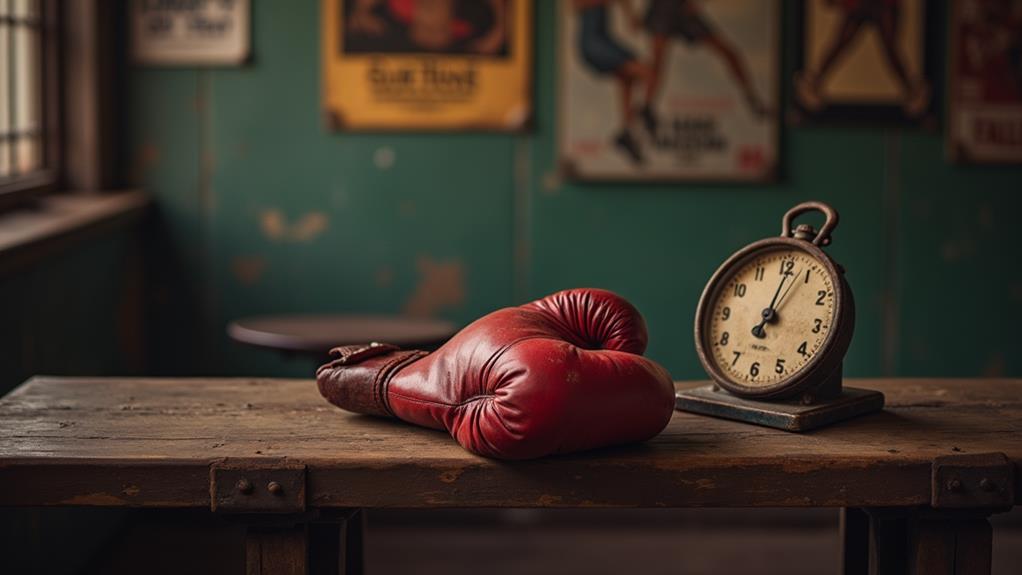
Multiple factors contribute to a fighter's progress and success, but few are as essential as measuring it effectively. As a fighter over 40, you need to track your progress through consistent journaling or digital tools to identify trends in your performance, strengths, and areas needing improvement. This allows you to adapt your training plans effectively.
Regular assessments of your skills and fitness levels, such as timing drills or technique accuracy, provide measurable data that reflects your growth and helps in setting new realistic goals. You stay motivated by celebrating small victories, like mastering a new technique or increasing training frequency.
Engaging with instructors for feedback and guidance guarantees that you receive expert insights on your progress, leading to more tailored and effective training strategies. Utilizing structured goal-setting frameworks, such as SMART criteria, helps you create clear, achievable objectives that facilitate a focused approach to measuring success over time.
Overcoming Mental Barriers
Beyond the physical aspects of training, mental barriers pose a formidable challenge to fighters over 40, threatening to undermine confidence and stall progress. You may find yourself doubting your abilities or fearing injury, which can greatly hinder your performance.
To overcome these mental barriers, you need to adopt a growth mindset, focusing on learning and resilience. By viewing challenges as opportunities for improvement rather than threats, you'll be better equipped to push through self-doubt and stay motivated.
To build self-efficacy, set incremental, achievable goals for yourself. As you reach each milestone, you'll reinforce a positive self-image and diminish mental barriers over time.
Additionally, practice visualization techniques to mentally rehearse successful performances, enhancing your confidence and reducing anxiety. Regular self-reflection and mindfulness practices will also help you identify and address mental barriers, leading to improved focus and increased enjoyment in your martial arts journey.
Sustaining Motivation and Engagement
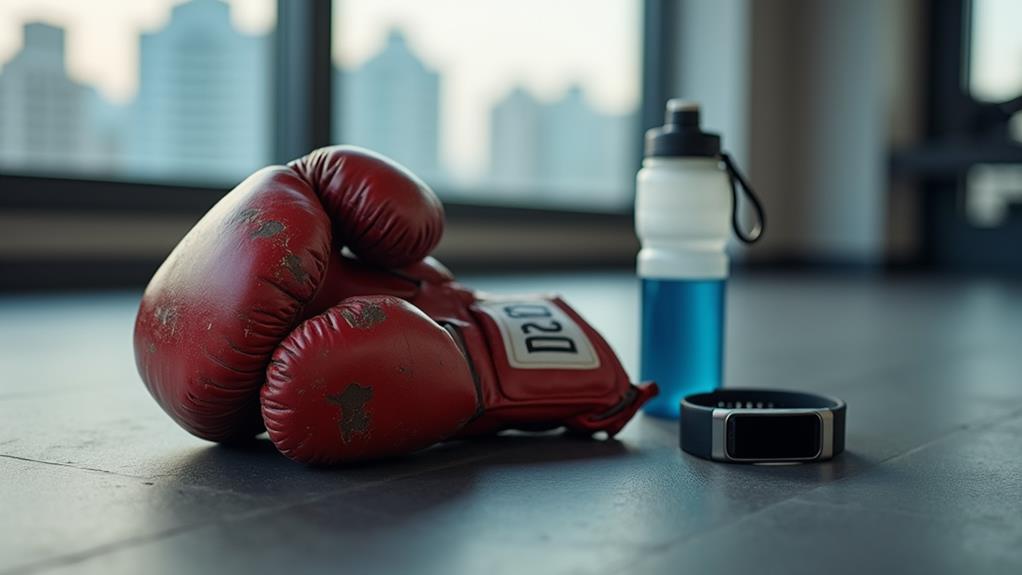
Having set realistic goals, you're now poised to tackle the next hurdle: sustaining motivation and engagement in your martial arts training. This is where the transformative power of martial arts truly shines – in helping you develop the mental toughness and discipline needed to overcome obstacles and stay committed to your goals.
To sustain motivation, focus on setting achievable, short-term goals that give you immediate satisfaction and a sense of accomplishment. Regularly tracking your progress will also enhance your motivation, as you'll see tangible evidence of improvement.
Don't underestimate the importance of a supportive training environment – peer accountability and encouragement from instructors can notably boost your motivation and engagement levels. Mixing up your training regimen by exploring different martial arts styles or techniques can also help maintain your interest and motivation.
By celebrating small victories and milestones, you'll experience increased self-esteem and motivation. With hard work and dedication, you'll be able to tap into the transformative power of martial arts and achieve your goals, even over 40.


